When it comes to suspension and drivetrain components in vehicles, the CV axle and control arm are two critical parts that play a crucial role in ensuring a smooth and safe ride.
While they both contribute towards the overall performance of the vehicle, they have distinct functions and designs.
In this blog post, we’ll explore the differences between the two components CV Axle vs Control Arm, their functions, and why it’s important to understand their roles in maintaining your car’s performance.
So, let’s dive in and learn more about CV axle vs control arm.
Table of contents
What is a CV Axle?
A CV axle, or constant velocity axle, is a vital component of a vehicle’s drivetrain. It connects the transmission to the wheels and allows them to rotate at different speeds while maintaining a constant velocity.
The CV axle consists of two joints, the inner joint and the outer joint, which are connected by a shaft. The inner joint is connected to the transmission, while the outer joint is connected to the wheel hub.
During acceleration and turning, the CV axle is subjected to high stress and can wear out over time.
Symptoms of a failing CV axle include clicking or popping sounds when turning, vibration during acceleration, and grease on the wheel or undercarriage.
It is important to have a faulty CV axle replaced promptly to prevent further damage to the vehicle’s drivetrain.
Regular maintenance and inspections can help identify any issues with the CV axle before they become a major problem.
Purpose:

The purpose of the control arm is to connect the steering knuckle and wheel hub to the frame of the vehicle. It’s a crucial component of a vehicle’s suspension system that helps maintain proper alignment, stability, and handling.
The control arm often also serves as an attachment point for other suspension components such as bushings, ball joints, shocks, and springs.
On the other hand, CV joints are used in vehicles with front-wheel drive systems to transfer torque from the transmission or differential to the front wheels.
They allow for flexibility in joint movement while still transmitting power smoothly between two points that are at different angles. CV joints work together with other drivetrain components such as axles, hubs, bearings and differential gears.
Both components play critical roles in ensuring your vehicle’s safe operation on any terrain by maintaining proper wheel position.
Therefore it is important not only to replace them when they fail but also keep them properly maintained through regular inspection during oil changes or preventive maintenance appointments.
What is a Control Arm?

A control arm, also known as an A-arm, is a critical component of a vehicle’s suspension system. It connects the steering knuckle and wheel assembly to the frame of the vehicle.
The primary purpose of a control arm is to allow for up-and-down movement of the suspension while keeping the wheels in alignment with the body of the car.
Control arms are often designed with ball joints at both ends that allow for smooth rotation and flexibility during steering and driving.
The upper and lower control arms attach to metal bushings that are responsible for absorbing road shock.
These bushings can wear out over time due to constant stress, causing unwanted noise or even affecting overall handling.
When these components need replacing, it’s important to choose high-quality replacements made from durable materials such as steel or aluminum alloy.
Regularly inspecting your control arms during oil changes can help catch any issues before they cause serious problems down the line.
Purpose Of Control Arm:
The control arm is a vital component of a vehicle’s suspension system. Its purpose is to connect the wheel hub and steering knuckle to the frame of the vehicle.
The control arm is a crucial element in maintaining proper wheel alignment and handling. It also helps absorb shock and vibration from the road, providing a smoother ride for passengers.
The control arm is responsible for controlling the movement of the wheel and ensuring that it stays in contact with the road, even on rough terrain.
It is essential to regularly inspect and maintain the control arm to ensure that it is functioning correctly.
Damage to the control arm can result in poor handling, uneven tire wear, and even loss of control of the vehicle.
If you notice any signs of wear or damage to your control arm, it is crucial to have it inspected and repaired immediately.
Functionality
The functionality of the CV axle and control arm is critical to the proper operation of a vehicle’s suspension system.
The CV axle transfers torque from the transmission to the drive wheel, allowing for smooth acceleration and turning.
Meanwhile, the control arm connects the suspension components to the steering knuckle, providing stability and support while absorbing shock and vibration.
Both components work together to ensure that your vehicle can handle bumps in the road without compromising your steering or causing damage to other vital components.
If either component fails or becomes worn down over time, it can cause issues with steering, handling, and overall performance.
Regularly checking these components during oil changes can help identify any issues before they become more significant problems down the road.
Differences Between CV Axle and Control Arm:
When it comes to the differences between a CV axle and a control arm, there are several aspects to consider.
| Feature | CV Axle | Control Arm |
|---|---|---|
| Purpose | Transmits power from the transmission to the wheels | Supports the weight of the vehicle and allows the wheels to move up and down |
| Location | Front and rear of the vehicle | Front and rear of the vehicle |
| Components | A shaft with two or three joints | A metal arm with a ball joint at each end |
| Symptoms of failure | Clicking or grinding noise when turning, vibration, loss of power to the wheels | Sagging or rattling noise when driving over bumps, vibration, loss of control |
| Cost | $100-$500 | $200-$500 |
| Lifespan | 100,000-150,000 miles | 100,000-150,000 miles |
Location and Function:
One of the primary differences lies in their location and function within the suspension system of a vehicle.
The CV axle is responsible for transferring power from the transmission to the drive wheels, while also allowing for up-and-down movement of the suspension.
On the other hand, control arms connect the wheel hub and steering knuckle to other components of the suspension system, providing support and stability during cornering or uneven road surfaces.
Material:
Another key difference is related to materials used for each component.
Control arms are often made from stamped steel or aluminum alloy, while CV axles typically feature more precise machining using heat-treated steel and hardened splines.
Cost:
Cost can also vary between these two components – replacing a single control arm may cost less than a full CV joint replacement on some vehicles.
However, wear and tear can impact both parts over time, with bushings in particular often needing regular replacement on control arms.
Common Problems with CV Axles and Control Arms:
If you’re experiencing issues with your vehicle’s steering or suspension, it could be due to problems with either the CV axle or control arm. Here are some common problems to look out for:
- Clicking or popping sounds when turning: This is often a sign of a worn-out CV joint. If left unchecked, it can eventually cause the joint to fail and potentially damage other components of your drivetrain.
- Steering wandering or pulling: This may indicate an issue with the control arm bushings. When these wear out, they can cause excessive play in the steering system and make it difficult to keep your vehicle on track.
- Knocking or clunking noises over bumps: This could be caused by a failing ball joint in the control arm. As mentioned earlier, load-carrying joints tend to fail first and can lead to more serious issues if not addressed promptly.
It’s important not to ignore any unusual sounds coming from your vehicle as they could be signs of imminent failure that may even cause accidents.
Regularly inspecting these critical components during oil changes is a good way to catch potential problems early on and avoid costly repairs down the road.
If you do need to replace either component, keep in mind that both lower and upper control arms should always be replaced together as they work together as part of a system.
CV Axle Issues:
CV axle issues can cause problems in your vehicle’s performance. Symptoms of a damaged or failing CV axle can include clicking or popping sounds while turning, vibration or shaking during acceleration, and grease leaking from the axle.
If you suspect an issue with your CV axle, it’s important to get it inspected and repaired by a professional mechanic to avoid further damage and potential safety hazards.
Control Arm Issues:
Control arm issues can greatly affect the handling and safety of your vehicle. If you notice unusual noises or vibrations while driving, it’s important to have your control arms inspected by a professional.
They may need to be replaced if they are worn or damaged. Regular maintenance and inspections can prevent costly repairs and ensure your vehicle is operating safely on the road.
How to Diagnose and Fix Problems with CV Axles and Control Arms?
Diagnosing Issues with CV Axles:
1. Vibrations:
If your car vibrates excessively while driving, especially during acceleration, it could be a sign of a damaged CV axle.
2. Clicking or popping sounds:
A clicking or popping sound when turning your steering wheel could indicate a failing CV joint.
3. Grease on the wheel:
If you notice grease on the inside of your wheel, it could mean that your CV boot has torn, allowing grease to escape and dirt to enter.
4. Steering issues:
If your car pulls to one side or the other while driving, it could be due to a faulty CV axle on that side.
5. Shaking during braking:
If you experience a shaking sensation while braking, a damaged CV joint could be the culprit.
Fixing Issues with CV Axles:
1. Listen for strange noises:
If you hear clicking or popping sounds when turning, it may be a sign of a damaged CV axle.
2. Check for grease leaks:
Look for signs of grease leaking from the CV joint or axle boot.
3. Inspect the CV boot:
If the boot is torn or damaged, it can allow dirt and debris to enter the CV joint, causing damage.
4. Replace the CV axle:
If there is damage to the CV joint or axle, it may need to be replaced to prevent further issues.
Diagnosing Issues with Control Arms:
1. Uneven tire wear:
If your tires are wearing unevenly, it could be a sign of a problem with your control arms.
2. Steering wheel vibration:
A vibrating steering wheel is often caused by worn or damaged control arm bushings.
3. Clunking noises:
If you hear clunking or banging noises when going over bumps, it may be time to have your control arms inspected.
4. Vehicle pulls to one side:
If your vehicle pulls to one side while driving, it may be due to a damaged or worn control arm.
5. Poor handling:
Control arm issues can cause poor handling and a less stable ride. If you notice this, it’s important to have it checked out.
Fixing Issues with Control Arms:
1. Identify the issue:
Before you attempt to fix control arm problems, it’s important to know what’s causing them.
2. Inspect the control arms:
Check the control arms for any signs of wear, damage, or corrosion.
3. Replace damaged parts:
If the control arms are damaged or worn out, it’s best to replace them entirely.
4. Tighten bolts and nuts:
Loose bolts and nuts can cause control arm issues, so make sure they’re properly tightened.
5. Align the wheels:
Wheel alignment is essential for proper control arm function, so make sure your wheels are properly aligned.
Is the control arm the same as the axle?
No, the control arm is not the same as the axle. In fact, they serve completely different purposes in a vehicle’s suspension system. While the axle is responsible for holding the wheels in place and transferring power from the transmission to the wheels, the control arm works to connect the wheel hub to the vehicle’s frame or body.
Control arms are located at the front axle at each of the two front wheels and are critical components in ensuring a smooth and safe ride.
A damaged or malfunctioning control arm can cause a range of issues, including poor handling, noise and vibration, and uneven tire wear.
If you suspect issues with your vehicle’s control arms, it is important to have them inspected and repaired by a professional mechanic as soon as possible to avoid more serious damage or safety concerns.
How can you tell which CV axle is bad?
To determine which CV axle is bad, you need to perform a visual inspection of each axle. Look for signs of damage or wear on the boots, such as cracks, tears, or leaks.
Additionally, you can test each axle by turning the steering wheel while the car is stationary. A bad axle will produce clicking or popping sounds. Finally, take the car for a test drive and listen for any unusual noises or vibrations.
What happens if control arm breaks while driving?
If the control arm breaks while driving, it can be a frightening experience. The control arm plays a critical role in the suspension system of the vehicle, and its failure can lead to loss of control and stability while driving.
If the control arm fails, the wheels will no longer be properly aligned with the frame of the vehicle, which will affect the ability to steer and maneuver the car.
In addition, driving with a broken control arm can also damage other parts of the suspension system, leading to even more expensive repairs.
Therefore, if you suspect that your control arm has failed, it is important to pull over immediately and have your vehicle towed to a repair center, as driving with a broken control arm is extremely dangerous.
Is it OK to replace only one control arm?
If you’re experiencing issues with your vehicle’s suspension, you may be wondering if it’s okay to replace just one control arm instead of both. However, it’s important to note that control arms should always be replaced in pairs.
Control arms are responsible for maintaining the alignment of your vehicle’s wheels and ensuring a smooth ride. When one control arm is worn or damaged, it can cause uneven tire wear and affect the handling of your vehicle.
If you only replace one control arm, the new one will be working with an old, worn out control arm, which can cause further issues down the line.
By replacing both control arms at the same time, you’re ensuring that your vehicle’s suspension is in top shape and that you won’t have to deal with the same issue again in the near future.
How much does it cost to replace a control arm?
If you’re experiencing issues with your vehicle’s suspension system, it may be necessary to replace the control arm. The cost of replacing a control arm can vary depending on a number of factors.
Typically, the cost ranges between $500 and $800, with labor costs accounting for a significant portion of the total cost. The make and model of your vehicle, as well as the location and experience of the mechanic you choose, can also impact the cost.
It’s important to note that replacing the control arm is not a DIY job and requires specialized tools and expertise.
Attempting to replace the control arm yourself can lead to further damage to your vehicle and potentially put you and other drivers at risk.
To ensure a safe and efficient repair, it’s best to consult a trusted mechanic for an accurate estimate and professional installation.
Conclusion and final thoughts 💭
Both the CV axle and control arm are essential components that play a crucial role in your vehicle’s performance and safety.
Regular maintenance and inspections of these parts can help prevent costly repairs and ensure your vehicle is operating safely on the road.
If you suspect any issues with your CV axle or control arm, it’s important to get them inspected by a professional mechanic immediately to avoid further damage and potential safety hazards.
Latest Posts:
- Can WD-40 Remove Scratches on Cars? (Hint: Yes, but…)
- Can You Use a Drill to Polish Your Car? (We Tried it Out!)
- Should You Cover Car Scratches With Stickers? (REVEALED!)
- Buick Service Stabilitrak: (Causes & 100% Guaranteed Fix!)
- Common Holden Trax Problems (Causes & 100% Proven Fixes!)
- Jeep Commander Transmission Over Temp: (Guaranteed Fix!)

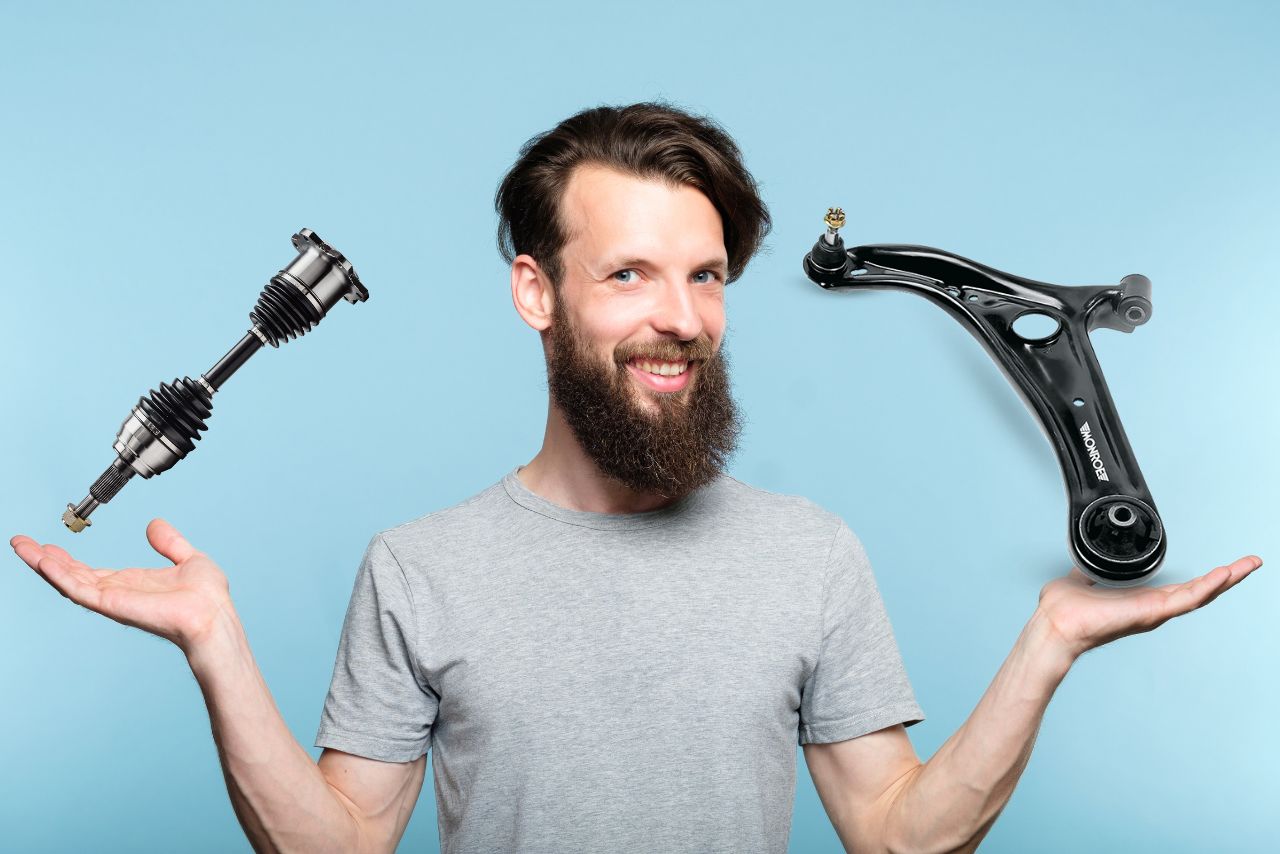
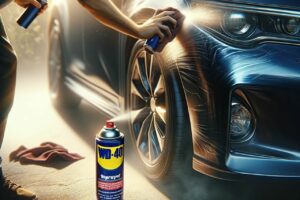
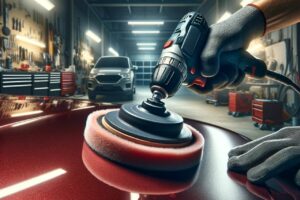

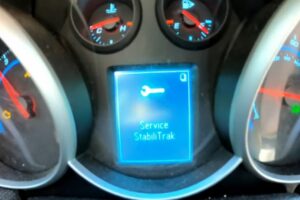

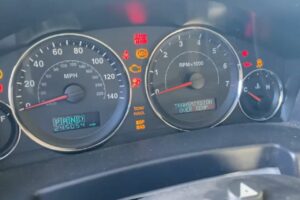



Leave a Reply